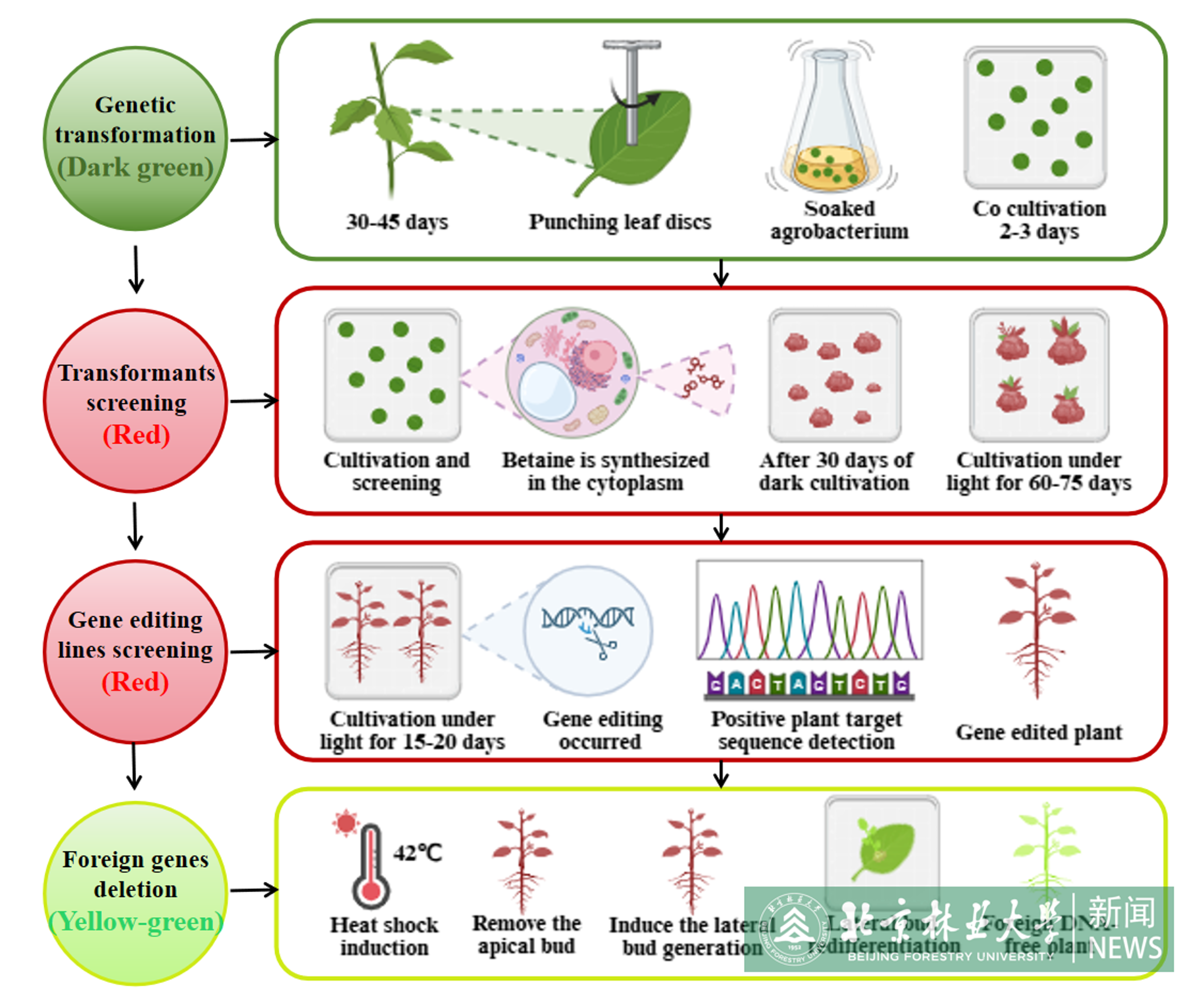Latest news
Professor An Xinmin's team at Beijing Forestry University's College of Biological Sciences and Biotechnology has developed a breakthrough gene-editing system for poplars, enabling multi-gene modification without leaving foreign DNA traces. Published in top journal Plant Biotechnology Journal, the Visual Monitoring DNA-Free Multi-Gene Editing (VMDFGE) system integrates three innovations, including visual screening(RUBY), Multi-gene targeting(CRISPR/Cas9-sgRNAs) and DNA-free multi-gene editing system(LoxP::FRT/FLP).

The CRISPR-Cas9 system has emerged as a potent molecular scalpel for precise genome editing, and profoundly revolutionized plant genetics and breeding, facilitating the development of innovative and improved plant varieties. Typically, the CRISPR-Cas9 gene-editing construct is delivered into target organisms via Agrobacterium tumefaciens-mediated transformation or biolistic methods. However, the incorporation of the CRISPR-Cas9 machinery increases the risk of off-target effects, causing unintended genomic alterations. Additionally, the introduction of exogenous DNA sequences, such as antibiotic resistance marker, raises public concerns regarding the biosafety and regulatory oversight of genetically modified organisms (GMOs), potentially hindering regulatory approval and commercialization. Here, the team have engineered an integrated system comprising RUBY, LoxP::FRT/FLP and CRISPR/Cas9-sgRNA cassettes within a single construct, allowing visible color monitoring throughout process including genetic transform, positive transgenic and edited events screening, as well as exogenous DNA excision events, researchers refer to it as 'a visual monitoring DNA-free multi-gene editing system (VMDFGE)'. This system was introduced into poplar through Agrobacterium tumefaciens-mediated transformation, yielding transgenic poplars with a 75.0% visual screening rate, a 45.8% targeted mutation rate and a 54.5% excision rate for the entire integration system. This approach eliminates the concerns associated with off-target effects and GMO regulatory challenges. It offers significant potential for improvement of poplar, other woody plants and crop species while removing the foreign DNA.

The first author of the paper is PhD candidate Wu Ruxian from the College of Biological Sciences and Biotechnology, with Professor Xinmin and Lecturer Qin Debin serving as co-corresponding authors. Beijng Forestry Univeristy is the signature unit of the first author.
This research has been supported by the China National Key R&D Program (2021YFD2200101), Major Project of Agricultural Biological Breeding (2022ZD0401503), the Young Scientists Fund of the National Natural Science Foundation of China (32100196) and the National Natural Science Foundation of China (31870652, 31570661).
Paper link: https://doi.org/10.1111/pbi.70219
Written by Qin Debin, An Xinmin
Translated and edited by Song He
Reviewed by Yu Yangyang












